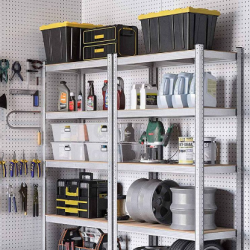Eco-friendly packaging: key factors
When it comes to manufacturing and selling products there is no way to avoid using packaging to contain, protect and market an item.
In an age where we are all constantly being encouraged to reduce our carbon footprint, many businesses are taking steps towards creating eco-friendly packaging by conserving energy, using sustainable materials and reducing their output of waste. But what constitutes as eco-friendly packaging and why is it so important?
How do we make packaging eco-friendly?
Considering the practical volume of packaging that is necessary for any given product is the first step – the lower the material usage the better. Materials that packaging machines consume should be recyclable, reusable and environmentally friendly. This means that ideally they should be biodegradable (meaning that they will naturally decompose rather than hanging around and clogging up landfill sites) and they should pose no threat to the environment by releasing harmful gases that will cause pollution and damage the ozone layer.
Why do we need eco-friendly packaging?
A report in The Telelgraph examines the nature of landfill sites and how quickly they are filling up. Unless action is taken, it is estimated that by 2018 the UK will have run out of space for its waste. Using sustainable packaging means moving away from likes of Styrofoam and plastic and instead opting to use recyclable and biodegradable materials that will naturally degrade or that can be reused – thus reducing the amount of waste in our landfill sites. It also means cutting down on non-renewable energy usage needed to power packaging systems (http://www.packaging-machines.co.uk/ for packaging machines), which in turn reduces their carbon footprint. Ultimately this will help to slow down the effects of climate change – a huge environmental concern that could dramatically affect temperatures, landscapes and wildlife on Earth.
What are the best materials to use?
One of the most popular emerging products in the eco-friendly packaging arena is bio-plastic. Similar to regular plastic in its form and usage properties, this product is made from natural fats and starches that can be found in vegetables and corn. Bagasse, a fibrous matter from the sugarcane plant, is a smart alternative to Styrofoam plates and cups that decomposes naturally. Plant starches and recycled paper are great ways to utilise natural, recyclable products and forest wood is well-known for being sourced from renewable plant products.



